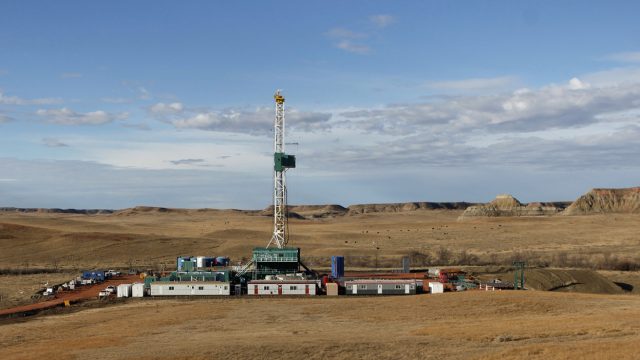"Roosevelt's Dakota Is Barely Visible Today"

One of the most frustrating facets of the debate over oil impacts in North Dakota is the expectation, espoused by some mostly outside of the oil patch, that the state was better off when it was desolate.
Case in point, the lead in this NBC News article:
President Theodore Roosevelt once came to North Dakota’s Badlands to find solitude and solace amid the area’s “desolate, grim beauty.” But Roosevelt’s Dakota is barely visible today.
You know what else is barely visible today? Thomas Jefferson’s Virginia. Benjamin Franklin’s Pennsylvania.
You know why? Because those gentlemen, like Roosevelt, are history. The areas they lived in have grown and developed since their lifetimes.
North Dakota is no different. And yet, some (including some in the state) seem to believe that North Dakota shouldn’t grow. That the state should remain “desolate” and “grim.”
There are a lot of different motivations for that.
Environmentalists seem to hate human industry in general.
Conservationists would like to lock down land use and treat the state like their own private game preserve (and they want a gigantic slush fund of taxpayer dollars to do it with).
I cite this example often, but I think it’s the perfect anecdote to illustrate this attitude. Last year when Fargo Forum publisher Matt Von Pinnon was driving through western North Dakota he posted this to Twitter:
Southwestern North Dakota is a beautifully untouched landscape made all the better by spotty cell phone service. Hope it stays that way.
— Matthew Von Pinnon (@inforumed) April 27, 2013
Because screw the people who live there and might want better access to modern communications, right? As long as you can visit western North Dakota and enjoy the grim desolation and stuff.
Maybe these people would like farmers to go back to farming with horse-drawn plows, because that would be more scenic or something. They could take it in while they’re enjoying their poor cell phone service.
Debates over the impacts of oil and gas development are worth having, but I often get the idea that people on one side of the debate aren’t so much interested in the right balance between economic development and preservation as they are with stopping development altogether to preserve some pastoral notion of western North Dakota that hasn’t existed in generations.




